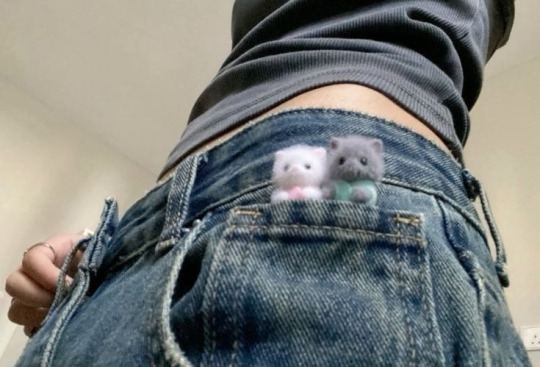Introvert/Open Mind/SeshSocial media is cancer.https://www.instagram.com/sicksagee/profilecard/?igsh=NTc4MTIwNjQ2YQ==
Don't wanna be here? Send us removal request.
Photo

AZTEC WARRIORS: OTOMI AND THE SHORN ONES
ethelwulfhrodberht, heycharade, david-j-west, limitlesscorrosion, irminsul-crepusculum-soporis, youreaharrywizard
SEE ALSO:
For background information on the education of Aztec youths and their military training, read my post: Aztec Education and Military Training
For information on the Aztec Jaguar Warriors, the Feast of the Flaying of Men, the warrior attire and helmets worn by the Eagle and Jaguar Warriors, read my post: Cuāuhocēlōtl - Part 1: Ocelotl, “Jaguar Warrior”
For information on the Aztec Eagle Warriors, the obsidian bladed Macuahuitl, the Chimalli (shield) and the Cuauhcalli (“house of eagles”), read my post: Cuāuhocēlōtl - Part 2: Cuāuhtli, “Eagle Warrior”

Aztec Warfare
Before a battle had commenced smoke signals were given so the army could organize and prepare for the upcoming battle. Before the initial clash of close combat there would be a ranged skirmish made up of stones, arrows and atlatl darts. The atlatl was more effective in closer range than stones and arrows and more lethal but the cores of Aztec armies were centered on their large number of commoners and low ranking youths.
Bow and Arrow
Bowmen in the front-lines would launch volleys at the enemy and then retreat to the rear of their allied infantry. Boys were trained in the use of the tlahuitolli and mitl (bow and arrow) in the mountains while in hunting parties during the Quecholli religious festival (dedicated to deer, the hunt and the god of the hunt, Mixcoatl). During the Quecholli or “precious feather”, children would be brought to temples where they would have blood released from their ears in order to honor the deer that were hunted during this festival.

^ Osprey - Warrior Series: Aztec Warrior AD 1325-1521 By John Pohl
This festival and hunt were not only to honor deer but also their Chichimec ancestors. There was also a symbolic hunt that was dedicated to the god of the hunt, Mixcoatl, people would dress up like deer and be hunted, captured and sacrificed at a temple (possibly even eaten; also some sources state that one man and one woman would be sacrificed). Mixcoatl (“cloud-serpent”) was the god of the hunt, the milky way and war as well as a Prometheus like figure who brought fire to mankind (he’s identified with the Milky Way, the stars, and the heavens). Although a very important deity of the Otomi and the Chichimecs, the Aztecs still honored him (as they believed that the chichimecs were their ancestors).

^ Mixcoatl
Now back to their battle tactics; the forefront of the army’s battle lines were made up of the Otomi and Shorn Ones, followed by the Cuāuhocēlōtl (Eagle and Jaguar Warriors), then the youths and commoners. Drums (Teponaztli) beaten and conch shells (Quiquiztli) blown to signal the beginning of the battle, missile fire would be exchanged followed by the advance of the melee combatants. The men would advance towards the enemy, lines stretched wide in an attempt to meet the enemy’s width or attempt to outflank them. After meeting in close combat the skill of the army fell on the expertise of the individual warriors who would engage in single combat. The youths and commoners would remain behind the more experienced warriors, armed with a spear (tepoztopilli), they would provide back up for them while also learning by watching (imagine an army of loosely formed hoplites or pikemen).
The elites would fight until they tired and then they would withdraw behind the safety of their allied lines where they would be replaced with fresher warriors (this circulation of forces would continue for hours). The commanders would go along the rear of the battle line and see where their forces were strongest and weakest, reserve troops would be dispatched to either outflank the enemy or strengthen weak points. After victory was assured, the youths would then be allowed to take on the tired or fleeing enemies, granting them the opportunity to advance in the ranks. At this time Europeans were more straightforward with warfare while the Mesoamericans encountered by the Spaniards would at times rely on guerrilla warfare. Pretending to flee in an attempt to draw the enemy into an ambush or they would let their center fall back so they could outflank their enemies (like Hannibal’s tactic at the Battle of Cannae). Sahagan’s native informant says of the Spanish commander’s brave men:
“- who were like [our] shorn ones [Quachic], like our Otomi [warriors]; the strong ones, the intrepid ones, the mainstay, the support of the state; its soul, its foundation.”
These ranks are shown as working in unison when in battle, fighting in pairs, if one of them were to flee then the emperor would have the man tracked down and punished. This disgraced man would then be banned from the House of Eagles and put under house arrest. (To read more on the ‘House of Eagles’, sacred temple of the elite, click on this sentence)
Otomi

^ Admittance required that the warrior had to be not only of the nobility and the capture of 5 or 6 enemies
There are a few theories relating to their origins, the most likely one is that the Otomi (Otontin, plural) were an ancient warrior people who inhabited Mexico before the nehuatl speaking Aztecs arrived and absorbed them. They fought against the Toltecs, the Purépecha and the Chichimecas as well as the Aztecs. The Otomi under Tlilcuetzpalin fought off the Aztecs under Axayacatl (1469-81 AD) but were eventually conquered by Ahuizotl (1486-1502 AD) in 1486. They remained a thorn in the sides of the Aztecs and are said to have fought under the Aztecs as allies or mercenaries. Later on during the Spanish conquest of Mexico, the Otontin fought on the side of the Spaniards against the Aztecs.
One thing is certain, these warriors were renowned for their fierceness and valor in combat and it is believed that that the elite order of the Shorn Ones were inspired by them (Both the Otomi and the Shorn Ones were the first to enter battle). They wore their hair tied on the top of their head with a white ribbon or band while their hair was grown out long in the back, yellow earplugs and a yellow labret (lip plug).Their garb was of emerald green, a shield of white with gold and turquoise with leather strips hanging down from the fringe and a Xopilli, (“claw-back”) pamitl (banner).
Shorn Ones

^ Admittance required 20 brave deeds and more than 6 captives
The Cuachicqueh (Cuauhchic, singular.) or “Shorn Ones” were ranked higher than the Eagle and Jaguar Warriors, as well as the Otomi. The Shorn Ones and the Otomi would receive housing within the palace of the Emperor. The Berserkers of the Imperial Aztec army, they are mentioned as being shock troops who were skilled, recklessly courageous and fearsome. They took an oath to never take a step backward on the battlefield or face being killed by their allied soldiers. They would (along with other ranks) tease and mock their enemies in order for them to leave their lines to attack, therefore creating openings and weak points for the Aztecs to take advantage of.

^ Osprey - Warrior Series: Aztec Warrior AD 1325-1521 By John Pohl
The Shorn Ones (shorn meaning “shaved”) were named for the fact that this rank required members to shave their heads, all but a braid of hair over the left ear (though some sources state that they also wore mohawks). They would paint their shaved heads blue on one side and yellow and red on the other; wore a white shell necklace, white earplugs (or leather earplugs), a bright yellow or gold feathered tlahuiztli (suit) as well as a shield of the same color.

^ Osprey - Warrior Series: Aztec Warrior AD 1325-1521 By John Pohl
Much like the feudal Japan’s sashimono (banner), the Aztecs often wore poles with distinct designs which displayed their rank. Their banner or Pamitl, was a tall thin pole colored in white and red stripes and green feathers atop it (the captaincy rank known as the Tlacateccatl and the general rank of Tlacochcalcatl were members of the Shorn Ones).

^ Osprey - Warrior Series: Aztec Warrior AD 1325-1521 By John Pohl
Tlacateccatl

As the commanding general, the Tlacateccatle (“Man-Cutter/slasher”) would organize and plan out the campaign strategy as well as the distribution of provisions and the engineering of battles. He was also one of the four advisers to the emperor and would also act as a dignitary.

^ Osprey - Warrior Series: Aztec Warrior AD 1325-1521 By John Pohl
They are said to have worn a red cape, long yellow labret (lip plug), a headband adorned with two quetzal feathers tassels ((symbol of high rank). The banner is said to have been used not only for the traditional reasons but also for protection from the sunlight, rain and projectiles.

^ Commoner, Ocelotl (”Jaguar Warrior”), Tlacateccatl (Right). Osprey - ‘Men-at-arms’ series: Aztec, Mixtec and Zapotec Armies by John Pohl (Author), Angus McBride (Illustrator)
Tepoztopilli – ranging from the size of a macuahuitl (1.06 m.-3.47 ft.) to about 2.13 m. (6.98 ft.), this weapon was similar to it but in the form of a halberd or spear. Less skilled warriors would use these spears because the length of the weapon would allow them to stay at a safe distance from the enemy while the more skilled warriors would engage in close combat with the shorter weapons. Higher tiered warriors are also depicted as armed with the Tepoztopilli.

^ Tepoztopilli
Tlacochcalcatl

^ Tlacaelel was a Tlacochcalcatl from Codex Mendoza
In the Aztec military the Tlacochcalcatl (“Keeper of the House of Darts [short spears]”) was 2nd in command, under the king, this was sometimes the final step before becoming the next king (usually related to the king). He’s in charge of almost all military matters; organizing the army, battle tactics, distributing rations and provisions, interrogations and imprisonments, as well as being in charge of the ‘house of darts’.

^ Osprey - Warrior Series: Aztec Warrior AD 1325-1521 By John Pohl
The Tlacochcalco or “house of darts” is the name of 4 armories (which held the throwing spears) within the city of Tenochtitlan located at the entrances of the ceremonial precinct. It is said that the estimated amount of weapons held in the house of darts numbered about 500 truckloads.


Atlatl – the force in which it was launched would have been about 20 times stronger than one thrown by hand. The atlatl is hard enough to use that some have come to believe that it would’ve only been used by the elite. Aztec gods are often seen holding them. The atlatl was used more so to disperse the enemy than to kill, after the atlatl volleys were cast the Aztecs would switch to the axe (tlateconi), club (the Macuahuitzoctli, Huitzauhqui and Cuauhololli) or the Macuahuitl for close combat (the axes could also be thrown at the enemy).




^ GIFs I made from: Deadliest Warrior - Aztec Jaguar vs. Zande Warrior
The helmet that the Tlacochcalcatl wore was of one of the most feared mythical demons in Aztec mythology called the Tzitzimitl (plural, tzitzimime), beings that brought death to mankind, caused destruction and took revenge on all enemies.

^ Depiction of a Tzitzimitl from the Codex Magliabechiano
“The tzitzimime were believed to dive head-first from the heavens, and for this reason, they were compared to the spider hanging head downward from its thread. The four sky-bearers, tlahuizcalpantecuhtli, xiuhtecuhtli, ehecatl-quetzalcoatl and mictlantecuhtli, could also take on the role of tzitzimime star demons, but the tzitzimime themselves were usually considered to be female.”
“They were thought of by the Mexicans in much the same manner as the medieval Christians regarded the fallen angels. An ancient myth tells us that at the time they dwelt in heaven, but because of their sins were expelled from its delights. It was perhaps as the dwellings of the Tzitzimimê rather than as those demons themselves that the stars were thought of, but their connection with the orbs of night is clear. They are represented in the manuscripts as taking the shapes of noxious insects, spiders, scorpions, and so forth.”
People (that I know of) who were ‘Tlacochcalcatl’:
Chimalpopoca – 3rd king of Tenochtitlan, 1417–27
Itzcoatl - 4th king of Tenochtitlan, 1427–40
Tlacaelel - Prince of Tenochtitlan
Moctezuma I - 5th king of Tenochititlan, 1440–69
Tizoc - 7th king of Tenochtitlan, 1481–86
Ahuitzotl - 8th king of Tenochtitlan, 1486–1502
Moctezuma II - 9th king of Tenochtitlan, 1502–20
Thank you for reading, if there are any errors please privately inbox me so I can update it. As always, if you’d like to read or learn about any specific historical subjects just let me know what they are and I will take note of them.
Sources:
Osprey - ‘Warrior’ series: Aztec Warrior AD 1325-1521 By John Pohl
Osprey - ‘Men-at-arms’ series: Aztec, Mixtec and Zapotec Armies by John Pohl (Author), Angus McBride (Illustrator)
Handbook to Life in the Aztec World By Manuel Aguilar-Moreno
Daily Life of the Aztecs, on the Eve of the Spanish Conquest By Jacques Soustelle
Aztecs & Conquistadores: The Spanish Invasion & the Collapse of the Aztec Empire By John Pohl, Charles M. Robinson
The Essential Codex Mendoza, Volume 2; Volume 4 By Frances Berdan, Patricia Rieff Anawalt
The Mexico Reader: History, Culture, Politics. Edited by Gilbert M. Joseph, Timothy J. Henderson
238 notes
·
View notes
Photo





We are Sex Bob-Omb and we are here to make you think about death and get sad and stuff.
Scott Pilgrim vs the World (2010) dir. Edgar Wright
3K notes
·
View notes
Text
v_____v
9 notes
·
View notes
Text

the clouds become even more beautiful through small button eyes
21K notes
·
View notes
Photo

Pyramid of the Sun at Teotihuacan, Expeditions organized or participated in by the Smithsonian Institution, 1912
1K notes
·
View notes











